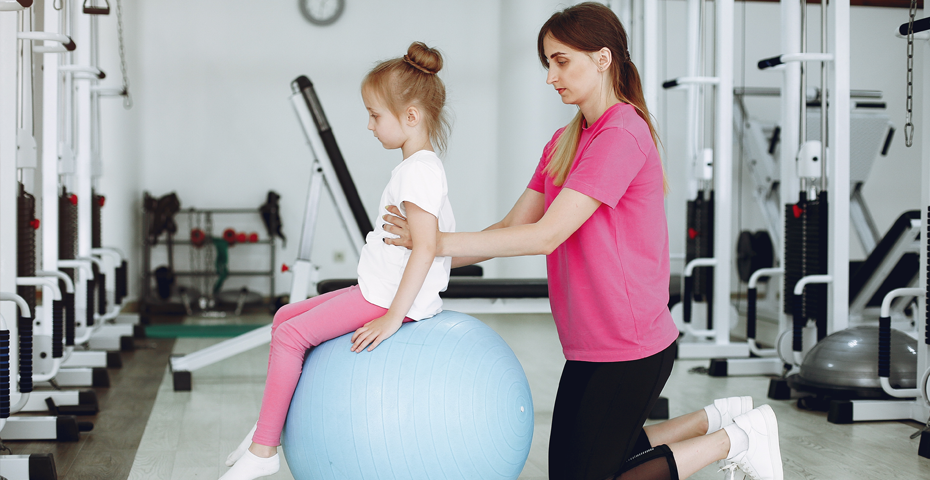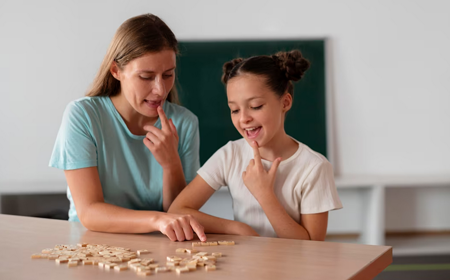Pediatric Physiotherapy: A Specialized Care for Children with Physical Challenges
Pediatric physiotherapy is a form of therapy that helps children who have difficulties
with movement, posture, balance, coordination, or function due to various physical
conditions or injuries. Pediatric physiotherapists are trained and experienced in
working with children from birth to 18 years of age. They use various techniques and
methods to assess, treat, and prevent physical problems that affect children's
development and well-being
What is Pediatric Physiotherapy?
Pediatric physiotherapy is based on the understanding that children are not just small
adults. They have different needs, abilities, and goals than adults. They also have
different stages of growth and development that influence their physical health and
function. Pediatric physiotherapists recognize these differences and tailor their
interventions accordingly.
Pediatric physiotherapy covers a wide range of physical issues in children, such as:
- Neuromuscular disorders: These are conditions that
affect the nerves and muscles that control movement.Examples include cerebral palsy,
spina bifida, muscular dystrophy, and spinal cord injury.
- Orthopedic conditions: These are conditions that
affect the bones, joints, ligaments, tendons, or muscles that support the body.
Examples include scoliosis, clubfoot, fractures, sprains, strains, and arthritis.
- Cardiorespiratory conditions: These are conditions
that affect the heart and lungs and their ability to deliver oxygen and nutrients to
the body. Examples include asthma, cystic fibrosis, bronchiolitis, and congenital
heart defects.
- Developmental delays or disabilities: These are
conditions that affect a child's ability to acquire skills or milestones in one or
more domains of development, such as motor, cognitive, language, social-emotional,
or adaptive. Examples include Down syndrome, autism spectrum disorder, intellectual
disability, and genetic syndromes.
What are the Benefits of Pediatric Physiotherapy?
Pediatric physiotherapy can offer many benefits for children with physical challenges and
their families. Some of
the benetits are'
- Improved function and independence: Pediatric
physiotherapy can help children improve their ability to perform daily activities
such as dressing, feeding, playing, or going to school. It can also help them
develop skills such as walking, running, jumping, or climbing.
- Enhanced growth and development: Pediatric
physiotherapy can help children achieve their optimal growth and development by
promoting healthy posture, alignment, movement patterns, and muscle tone. It can
also help them prevent or correct deformities or complications that may arise from
their physical
- conditions
- Increased confidence and self-esteem: Pediatric
physiotherapy can help children boost their confidence and self-esteem by enabling
them to participate in activities that they enjoy or value. It can also help them
overcome their challenges and achieve their goals.
- Reduced pain and discomfort: Pediatric physiotherapy
can help children reduce pain and discomfort that may result from their physical
conditions or injuries. It can also help them prevent or manage chronic pain
- or inflammation.
What are the Techniques and Methodologies of Pediatric Physiotherapy?
Pediatric physiotherapy involves various techniques and methodologies that are tailored
to the specific needs and goals of each child and family. Some of the common techniques
and methodologies are:
- Evaluation: This is the process of gathering
information about the child's medical history, physical
- examination. develonmental assessment. and runctiona assessment. It mav involve
interviews with the
- child, the parents or caregivers, or other professionals. It may also involve using
standardized tools such as tests, scales, or questionnaires.
- Intervention: This is the process of implementing a
plan of action to address the child's physical problems and improve their function.
It may involve using manual techniques such as massage, mobilization, or
manipulation. It may also involve using therapeutic exercises such as stretching,
strengthening, or balance
- training.
- Education: This is the process of providing
information and guidance to the child and the family about the child's physical
condition, treatment plan, and expected outcomes. It may involve teaching them about
- anatomy, physiology, pathology, or prevention. It may also involve instructing them
on how to perform exercises or activities at home or in the community.
- Equipment: This is the process of selecting and using
appropriate devices or aids to assist the child's function or mobility. It may
involve using orthotics such as braces, splints, or casts. It may also involve using
prosthetics such as artificial limbs or joints. It may also involve using assistive
devices such as crutches, walkers, wheelchairs, or scooters.
How to Get Started with Pediatric Physiotherapy?
If you have a child with a physical challenge that affects their movement or function,
you may benefit from pediatric physiotherapy. The first step is to consult with your
doctor or a pediatric physiotherapist for a referral and an evaluation. The evaluation
will determine the type and severity of your child's physical problem, and the
appropriate treatment plan. The treatment plan will include the goals, objectives,
methods, frequency, and duration of pediatric physiotherapy.
Pediatric physiotherapy can be provided in various settings, such as hospitals, clinics,
schools, homes, or online.
Pediatric physiotherapy can also be done individually or in groups, depending on your
child's and family's needs and preferences. Pediatric physiotherapy can be fun and
rewarding, as it can help your child with physical challenges and their families achieve
their best outcomes and quality of life.
 Service details
Service details

